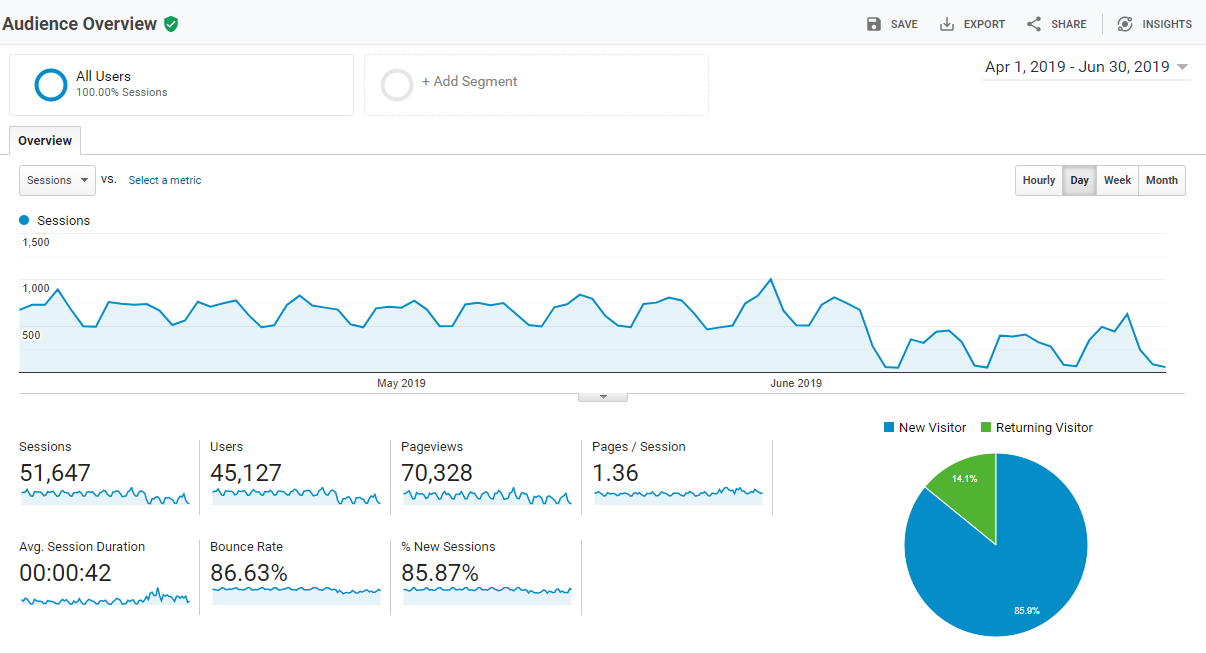Higher Education Website Management: 6 Best Practices
Overseeing a content calendar, staying GDPR- and accessibility-compliant, optimizing your website for search, and keeping content current are crucial website management practices for maintaining a strong online presence.
For effective college website management, implement these six best practices:
- Prioritize accessibility.
- Update content frequently.
- Monitor website performance.
- Double-down on privacy.
- Choose a powerful content management system (CMS).
- Create a website governance policy.
Your school website is the front door to your institution—especially to prospective students who do not live close by. When you give priority to consistent, ongoing website management, you’ll ensure the accuracy, accessibility, and freshness of your institution’s digital presence.
What’s the big deal about content? Download our white paper Manage Website Content Like a Pro: 8 Steps to Success to learn more about optimizing content for search, creating an editorial calendar, developing a content strategy, and measuring your website’s success.
1. College and University Website Management Tip: Prioritize Accessibility
Accessibility. Accessibility. Accessibility. You’re probably tired of hearing how important it is for your website to be accessible to everyone, but this issue is not going away. If anything, accessibility will become an even bigger priority as Universal Design Learning (UDL) practices become more prevalent. UDL guidelines provide a framework for design and composition of content based on scientific insights into how humans learn. UDL practices apply both on and offline so that all learners, including those with accessibility challenges, can access and participate in learning opportunities.
Stay ahead of the game by incorporating accessibility concerns into your website management protocol. This best practice is one way to ensure compliance and avoid receiving a dreaded OCR letter.

CAPTION = 61 million adults in the United States live with a disability.
Infographic courtesy of the Centers for Disease Control and Prevention
2. College and University Website Management Tip: Update Content Frequently
Outdated content is not a big deal if you are constantly adding new content to your website, right? Wrong! Dumping new content onto your website without revising existing content and deleting outdated content creates bloat—which becomes a big headache when you decide it’s time for a website redesign.
It also reduces site optimization because outdated, duplicated, and unmanaged content contributes to a confusing navigation structure and is likely to have broken links and old keyword optimization.
Above all, outdated content on your website includes old dates and information. Imagine if a prospective student lands on an outdated admissions page and submits an application after the current deadline. Or what if a donor wants to make a donation but can’t find a current address? The last thing you want to do is mislead your audience and worse, give the impression that your college or university doesn’t care about keeping its website readers up to date.
3. College and University Website Management Tip: Monitor Website Performance
College and university website maintenance is an ongoing task to ensure that broken links, orphaned pages, unlinked videos and resources, and other elements on your website are accurate and working. Performing these tasks manually is time-consuming, so invest in a content management system that automates these tasks for you.
You’ll also want to implement a way to measure your website’s performance. Install Google Analytics to better understand the science behind your website and how you can better engage and attract prospective students to your college or university.

CAPTION = Your institution can better understand the science behind your website through Google Analytics when you know how to use its tools.
4. College and University Website Management Tip: Double-Down on Privacy
The European Union’s General Data Protection Regulation (GDPR) has schools on hyper-alert regarding privacy issues. The rule protects the personal data of all people who live in the EU, even if they are not citizens of the foreign country where they reside—and even if they are not physically living in the EU. This means that if you have any foreign students attending or a foreign faculty member teaching at your school, their data is protected by GDPR laws. The same goes with your U.S. students who study abroad in an EU country.
Complying with GDPR protects your school, but also boosts your website management practices in regard to pending U.S. privacy laws as many states are now implementing laws similar to GDPR.
5. College and University Website Management Tip: Choose a Powerful Content Management System (CMS)
A powerful CMS allows you to publish content for your website as well as manage a host of other college and university website maintenance duties, including:
- Workflow management. Multi-stage workflows are built into a good CMS with user levels for reviews and approvals so that there is no lag in publishing information at the time it is most needed.
- Global site changes and updates. If you aren’t using a robust CMS, you’ll have to make both major and nuanced changes on every single page of your website. A quality CMS allows you to make these changes once and then apply them to all pages globally throughout your website, instantly. The same is true for legal changes, emergency alerts, and other critical messaging.
- Automatic security updates. Most commercial CMS products feature automatic security updates, eliminating the need for you to monitor patches and new updates and then manually load them. Likewise, with a quality CMS, your website will be supported for the life of the CMS.
Shopping for a CMS? Schedule a demo of Omni CMS, the most powerful CMS for higher ed.
6. College and University Website Management Tip: Create a Website Governance Policy
Outlining your web governance strategy in writing and with input from vested parties ensures that everyone who works on your site is aligned with your college or university website strategy and expectations. A website governance policy details your institution’s structure of people, processes, and policies to maintain and manage your website. Get buy-in from senior administration to aid with enforcement and understand that a website manager can oversee, at best, around 200 pages.
Finally, make sure that your website governance policy is easily accessible (many schools include their governance policy on their website) so that when questions arise, they can be resolved with a quick review.
Conclusion
College website management doesn’t have to be a chore. For the best long-term results, take time to think through the process, implement best practices, identify stakeholders who can offer valuable input, and develop a comprehensive web governance policy for your school.
Is a website redesign in your future? Learn everything you need to know by downloading our white paper College and University Website Redesign: The Ultimate Guide.
Download the ultimate guide now
Last updated: February 5, 2021


